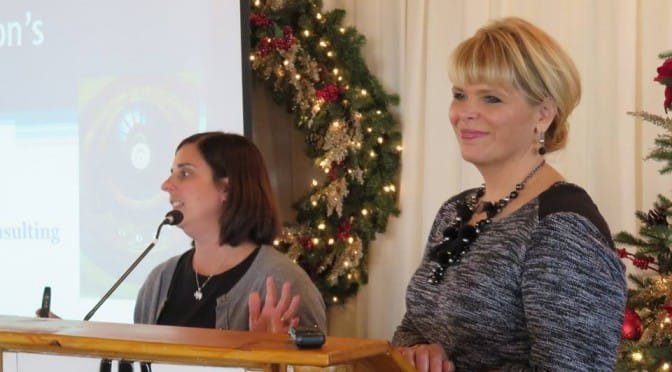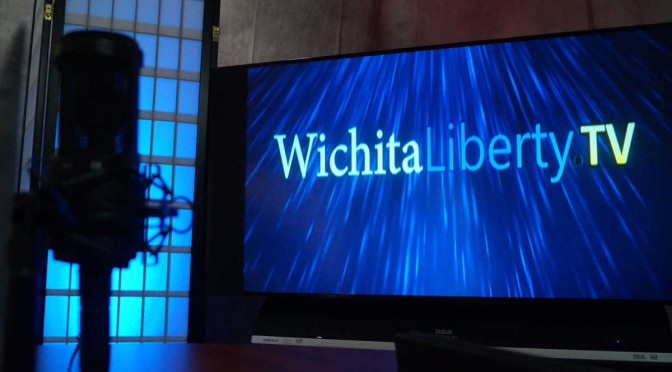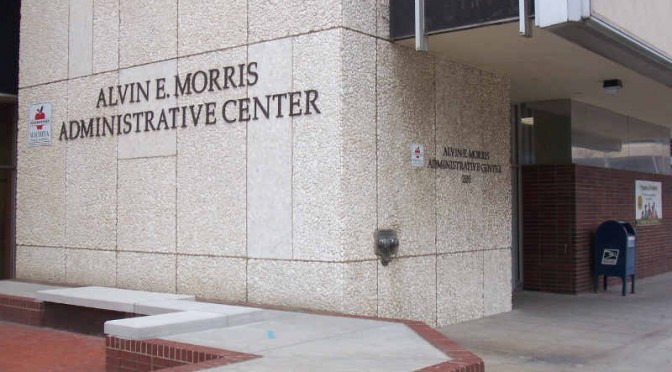Wichita considers three tax abatements, in one case forcing an “investment” on others that it itself would not accept.
This week the Wichita City Council will consider three tax abatements to companies in the aerospace business. Two are very large companies, and one is in the small business category.
In two cases the tax abatements are implemented through industrial revenue bonds. Under this program the city is not lending money. Instead, the program is a vehicle, created by under Kansas law, for companies to avoid paying property tax. In some cases companies may also avoid paying sales tax.
In another case the property tax abatement is conveyed through the city’s Economic Development Tax Exemption (“EDX”) program, which allows the city to forgive the payment of property taxes. In many instances, the issuance of Industrial Revenue Bonds is required by law in order to achieve tax forbearance. The EDX program does away with the often meaningless issuance of bonds, and lets the city implement, in a streamlined fashion, the primary economic goal: Granting permission to skip the payment of property taxes.
The goal of the industrial revenue bonds, however, is often obscured by news media and the city itself. For example, in the agenda material for the Cessna IRBs, the city states “Bond proceeds will be utilized to finance capital investment in the Wichita facilities.”
But later in the same document, we see “The IRBs will be purchased by Cessna and will not be offered to the public.” So the IRBs — the bonds the city is authorizing — aren’t really financing anything. By buying the bonds itself, Cessna is self-financing the purchases or obtaining the funds in some other way. The IRBs are merely a device to grant tax abatements. Nothing more than that — except that the bond program obfuscates the true economic meaning of the transaction, adds costs to the applicant company, and adds cost to the city (offset to some degree by fees paid by the applicant company).
Regardless of the cost and hassle to Cessna, the program has a payoff. City documents state that Cessna could save as much as $317,357 per year in property taxes.
For the Bombardier Learjet IRBs, the city tells us that “Bond-financed purchases are also exempt from state and local sales taxes.” The amount of abated taxes is not given.
For Perfekta, an aerospace supplier, the city is using the EDX program to convey a property tax abatement, with the estimated value of the tax exemption in the first full year being approximately $110,792, according to the agenda packet.
In this case, the city did not award a 100 percent tax abatement. This is due to the city’s policy of requiring a benefit-cost ratio of 1.3 to one, although there are exceptions the city may use. In this case, the city adjusted the amount of tax abatement down until the 1.3 benchmark was achieved, as described in city documents: “To achieve the ratio of benefits to costs of at least 1.3 to 1.0 as required in the City/County Economic Development Policy, the percentage abatement should be reduced to an 89% tax exemption on a five-plus-five year basis.”
The benefit-cost ratio is calculated by the Center for Economic Development and Business Research (CEDBR) at Wichita State University based on data supplied by the applicant company and the city. The rationale behind these calculations is a matter of debate. Even if valid, calculating the ratio with such precision is folly, reminding us of the old saw “Economists use a decimal point to remind us they have a sense of humor.”
Of note, while the city wants to “earn” a 1.3 ratio of benefits to costs, it forces a lower ratio on two overlapping jurisdiction, as shown in city documents:
City of Wichita 1.34 to 1
City of Wichita General Fund 1.30 to 1
Sedgwick County 1.24 to 1
USD 259 1.17 to 1
State of Kansas 7.94 to 1
The county and school district have no choice but to accept the decision made by the city and accept a “return” lower than the city would accept for itself.
The city presents a benefit-cost ratio to illustrate that by giving up some property taxes, it gains even more tax revenue from other sources. But a positive benefit-cost ratio is not remarkable. Economic activity generally spawns more economic activity, which government then taxes. The question is: Did the city, county, school district, and state need to give up tax revenue in order to make these investments possible?
The problem with these actions
Part of the cost of these companies’ investment, along with the accompanying risk, is spread to a class of business firms that can’t afford additional cost and risk. These are young startup firms, the entrepreneurial firms that we need to nurture in order to have real and sustainable economic growth and jobs. But we can’t identify which firms will be successful. So we need an economic development strategy that creates an environment where these young entrepreneurial firms have the greatest chance to survive. The action the Wichita city council is considering this week works against entrepreneurial firms. (See Kansas economic growth policy should embrace dynamism and How to grow the Kansas economy.)
A major reason why these tax abatements are harmful to the Wichita economy is its strangling effect on entrepreneurship and young companies. As these companies and others escape paying taxes, others have to pay. This increases the burden of the cost of government on everyone else — in particular on the companies we need to nurture.
There’s plenty of evidence that entrepreneurship, in particular young business firms, are the key to economic growth. But Wichita’s economic development policies, as evidenced by this action, are definitely stacked against the entrepreneur. As Wichita props up its established industries, it makes it more difficult for young firms to thrive. Wichita relies on targeted investment in our future. Our elected officials and bureaucrats believe they have the ability to select which companies are worthy of public investment, and which are not. It’s a form of centralized planning by government that shapes the future direction of the Wichita economy.
These targeted economic development efforts fail for several reasons. First is the knowledge problem, in that government simply does not know which companies are worthy of public investment. This lack of knowledge, however, does not stop governments from creating policies for the awarding of incentives. This “active investor” approach to economic development is what has led to companies receiving grants or escaping hundreds of millions in taxes — taxes that others have to pay. That has a harmful effect on other business, both existing and those that wish to form. Young entrepreneurial companies are particularly vulnerable.
 Professor Art Hall of the Center for Applied Economics at the Kansas University School of Business is critical of this approach to economic development. In his paper Embracing Dynamism: The Next Phase in Kansas Economic Development Policy, Hall quotes Alan Peters and Peter Fisher: “The most fundamental problem is that many public officials appear to believe that they can influence the course of their state and local economies through incentives and subsidies to a degree far beyond anything supported by even the most optimistic evidence. We need to begin by lowering expectations about their ability to micro-manage economic growth and making the case for a more sensible view of the role of government — providing foundations for growth through sound fiscal practices, quality public infrastructure, and good education systems — and then letting the economy take care of itself.”
Professor Art Hall of the Center for Applied Economics at the Kansas University School of Business is critical of this approach to economic development. In his paper Embracing Dynamism: The Next Phase in Kansas Economic Development Policy, Hall quotes Alan Peters and Peter Fisher: “The most fundamental problem is that many public officials appear to believe that they can influence the course of their state and local economies through incentives and subsidies to a degree far beyond anything supported by even the most optimistic evidence. We need to begin by lowering expectations about their ability to micro-manage economic growth and making the case for a more sensible view of the role of government — providing foundations for growth through sound fiscal practices, quality public infrastructure, and good education systems — and then letting the economy take care of itself.”
In the same paper, Hall writes this regarding “benchmarking” — the bidding wars for large employers: “Kansas can break out of the benchmarking race by developing a strategy built on embracing dynamism. Such a strategy, far from losing opportunity, can distinguish itself by building unique capabilities that create a different mix of value that can enhance the probability of long-term economic success through enhanced opportunity. Embracing dynamism can change how Kansas plays the game.”
In making his argument, Hall cites research on the futility of chasing large employers as an economic development strategy: “Large-employer businesses have no measurable net economic effect on local economies when properly measured. To quote from the most comprehensive study: ‘The primary finding is that the location of a large firm has no measurable net economic effect on local economies when the entire dynamic of location effects is taken into account. Thus, the siting of large firms that are the target of aggressive recruitment efforts fails to create positive private sector gains and likely does not generate significant public revenue gains either.’”
(For a summary of the peer-reviewed academic research that examines the local impact of targeted tax incentives from an empirical point of view, see Research on economic development incentives. A sample finding is “General fiscal policy found to be mildly effective, while targeted incentives reduced economic performance (as measured by per capita income).”)
There is also substantial research that is it young firms — distinguished from small business in general — that are the engine of economic growth for the future. We can’t detect which of the young firms will blossom into major success — or even small-scale successes. The only way to nurture them is through economic policies that all companies can benefit from. Reducing tax rates for everyone is an example of such a policy. Abating taxes for specific companies through programs like the Wichita city council is considering this week is an example of precisely the wrong policy.
In explaining the importance of dynamism, Hall wrote: “Generally speaking, dynamism represents persistent, annual change in about one-third of Kansas jobs. Job creation may be a key goal of economic development policy but job creation is a residual economic outcome of business dynamism. The policy challenge centers on promoting dynamism by establishing a business environment that induces business birth and expansion without bias related to the size or type of business.”
We need to move away from economic development based on this active investor approach, especially the policies that prop up our established companies to the detriment of dynamism. We need to advocate for policies — at Wichita City Hall, at the Sedgwick County Commission, and at the Kansas Statehouse — that lead to sustainable economic development. We need political leaders who have the wisdom to realize this, and the courage to act appropriately. Which is to say, to not act in most circumstances.
 Natalie Bright and Marlee Carpenter of Bright and Carpenter Consulting briefed members and guests of the Wichita Pachyderm Club on the results of the 2015 session of the Kansas Legislature, and what to look for in next year’s session and elections. December 4, 2015.
Natalie Bright and Marlee Carpenter of Bright and Carpenter Consulting briefed members and guests of the Wichita Pachyderm Club on the results of the 2015 session of the Kansas Legislature, and what to look for in next year’s session and elections. December 4, 2015.











